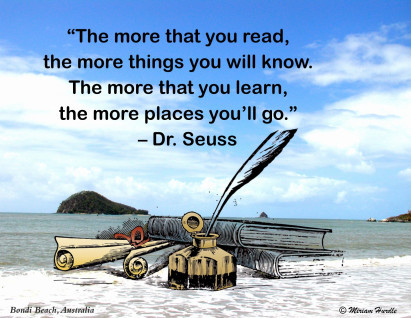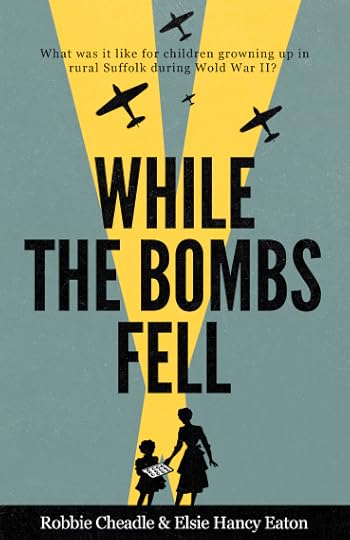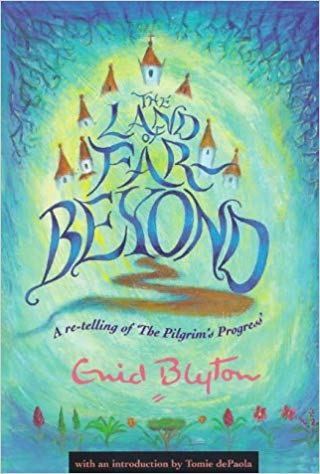Robbie Cheadle's Blog, page 60
August 5, 2019
Meet Father Merton, a character in Through the Nethergate
I have been over at K Morris – Poet blog with a post about Father Merton, one of the significant characters in my forthcoming novel, Through the Nethergate.
Father Merton is a Catholic priest who grew up on a diet of Norse mythology and Scandinavian folklore emanating from his mother’s side of the family who lived in Norway. His background and continuous exposure to superstition and mythical beliefs have resulted in him having a much more open mind about such matters than his colleagues who have grown up in a much more science focused world. Father Merton considers situations from all perspectives and applies all his senses, including a highly developed sixth sense.
Following his own encounter with a spirit as a young priest, Father Merton made a career choice to become an exorcist within the structure of the Catholic Church. During his career as an exorcist, he has interacted with plenty of charlatans who were putting on a fine show of being haunted, but he has also come across several genuine hauntings.
“As he drove along a stretch of the road lined on both sides by tall trees, he happened to glance into his rear-view mirror. In the moonlight he saw a teenage girl sitting in the back of his car.
He assumed she was the daughter of one of the Catholic families who had attended the service and his initial reaction was one of irritation. Why had she stowed away in his car? Was she running away from home?
He swung around to look at the teenager over his shoulder, but there was no-one there.
A few seconds later, he looked in the rear-view mirror again and the girl was back. Her skin shone whitely although he couldn’t see her face clearly in the dim light. He swung around for a second time and his annoyance intensified when he saw she was gone again. Why was she ducking down behind the seat when he turned to look at her? It was such a childish thing to do.
He slammed on the brakes and climbed out of the driver’s seat of the car. Marching around to the back door he flung it open, intending to give the girl a good telling off, but there was no-one there. The car was completely empty.
She couldn’t possibly have jumped out of the car and run away; he would have seen her.
He shut the back door and walked back to the driver’s door. Taking his seat, he again peered into the rear-view mirror. The girl was back. She was sitting serenely in the back seat, hands folded neatly on her lap.
Carry on reading here: https://kmorrispoet.com/2019/08/02/me...

July 5, 2019
Some interesting comments about my stories in Death Among Us
"Another favorite is Robbie Cheadle, an author who's participated in another short story collection that I've read as well as written many children's books with her sons. What a vastly differently style across her entire inventory of books and stories... to kick off with, in 'Justice is Never Served,' we have a woman who murders babies! Then there are the chimney sweeping killers (not what you're thinking either!)... Cheadle delivers just the right amount of gore and thrills without going over the top, as the topic could be quite difficult to swallow. The best parts of her three stories are how they are all based on some sort of true story... which makes the tale even more horrific. She's definitely cultivated her talents in these three tales, and I hope to see a full-length horror novel from her one day."
"I especially liked the stories written by Robbie Cheadle, because they were based on real horror events in history while adding a hint of supernatural elements."
June 30, 2019
Guest author: Robbie Cheadle – Climbing boys

About climbing boys
During the 1700s and 1800s, mainly male children often performed an occupation known as a climbing boy or chimney sweep. Many of the climbing boys were orphans, and in Great Britain many came from workhouses, and some were as young as 3 years old. As the child needed to be quite small to climb up the chimneys of the time, most climbing boys outgrew this occupation by the time they were nine or ten years old, although due to poor diet, some worked until they were as old as fourteen years.
The life of a climbing boys was dangerous as they climbed hot flues that could be a mere 7 inches square, although 14 inches by 9 inches was a common standard, and they could get jammed in the flue, suffocate or burn to death. The children developed raw, red skinless patches on their bodies from climbing up and down the stacks. These only went away when the climber developed calluses or the skin was hardened by their master applying an application of strong brine, which was placed on them in front of a hot fire.
The boys also frequently fell, and this resulted in deformed ankles, broken legs and twisted spines. Eye and respiratory problems also plagued climbing boys. The deadliest condition that affected climbing boys was called chimney sweeps’ carcinoma which was caused by the fact that soot is carcinogenic, and the boys slept under the soot sacks and were rarely washed. Chimney sweeps’ carcinoma is a cancer that results from squamous cells which form on the surface of the skin and the lining of hollow organs in the body and line the respiratory and digestive tracts. Warts on the skin of the scrotum, caused by the irritation from soot particles, developed into scrotal cancer which ultimately invaded the abdomen and killed the sufferer.
The climbing boys were apprenticed to a master sweep who was paid by the parish to teach the orphans or paupers the craft of chimney sweeping. The boys signed papers of indenture, in front of a magistrate, which bound them to the master sweep until they were adults.
You can continue reading this post here: https://scvincent.com/2019/06/24/guest-author-robbie-cheadle-climbing-boys/

June 21, 2019
Friends Of #FurkidFriday: The Fondant Siamese Cat
The fondant Siamese cat from Sir Chocolate and the Fondant Five story and cookbook is over at Zigler News today, hosted by children’s author and poet, Victoria Zigler, being interviewed by Tori’s lovely dog, Lilie the Westie. Thank you Lilie and Tori for hosting her today.
Hi everyone. This is Lilie the Westie.
We invited some of our furry friends to come introduce themselves on here. But something weird happened, and now I have a strange new friend for you to meet today. At first I thought it was a tasty snack. But then it started talking, which is how I realized it was a friend instead. Lucky I realized that in time, because Mummy says you mustn’t eat friends, no matter what they smell like.
Anyway, I’m sorry for almost mistaking you for a snack, new friend. But, tell me, who, or what, are you
Meeeooow! I am the fondant Siamese cat. Sir Chocolate created me in his Chocolatier and the Fruitdrop Fairies gave me life with their magic powder sugar. Sir Chocolate and I are good friends and I sometimes visit him and the other animals at the Chocolate Land Zoo.
When I met Sir Chocolate in the wood one day and he asked for my help to rescue the Fondant Five animals who had been kidnapped by the Wedding Cake Elves, I was delighted to be of service to him. I played an important role in rescuing the lion, the elephant, the rhino, the leopard and the buffalo and I am proud of that. Of course, Sir Chocolate formulated the rescue plan and the fondant giraffe and the fondant monkey also helped. We worked as a team to use our individual talents and physical features to help with the rescue. I have always been a loner and it was fun to work in a team to such good effect.
[image error]
You can continue reading this article here: https://ziglernews.blogspot.com/2019/06/friends-of-furkidfriday-fondant-siamese.html

June 9, 2019
BOOK REVIEW – SIR CHOCOLATE AND THE FONDANT FIVE STORY AND COOKBOOK BY ROBBIE AND MICHAEL CHEADLE

[image error]
Blurb
Sir Chocolate and the Fondant Five Story and Cookbook is Number 6 in the Sir Chocolate series: Five zoo animals go missing and Sir Chocolate needs to find them. Includes five lovely new recipes.
My Recommendation
Robbie Cheadle and her son Michael, in the delightful book Sir Chocolate and the Fondant Five Story and Cookbook, combine children’s story, poetry and recipes together. The story is about a zoo in Chocolate Land with Fondant Five, namely the lion, king of the jungle, the gentle elephant, the elegant leopard, the bulky rhino, and the buffalo. Sir Chocolate cares for them. One day, these five fondant animals disappeared. Sir Chocolate found Fondant Cat who could help to find Fondant Five.
This fun story book includes recipes for Lady Sweet Rusks, Buffalo Coconut Cake, Rhino Soetkoekies, Cheetah Cheese Scones, and Sir Chocolate Peppermint Caramel Pudding.
The book has beautiful photograph of the fondant animals and desserts. Students in the classrooms will enjoy the story, poems and photos in this book. I will read this to my granddaughter. I also love the idea of parents doing the cooking with their children using these recipes.
My Amazon and Goodreads rating: 5.0 out of 5 Stars

You can read the rest of this post here: https://theshowersofblessings.com/2019/05/28/book-review-sir-chocolate-and-the-fondant-five-story-and-cookbook-by-robbie-and-michael-cheadle/?c=35765#comment-35765

May 30, 2019
#ShareAReviewDay Tuesday – “While the Bombs Fell” by Robbie Cheadle & Elsie Hancy Eaton
Marcia Meara from The Write Stuff blog has shared a lovely review of While the Bombs Fell.

This morning, I have the pleasure of welcoming Robbie Cheadle to The Write Stuff. Robbie is sharing a review from her book While the Bombs Fell, and I know you’ll enjoy checking it out. Please remember to share far and wide, so lots of new readers will find this one! Thanks!

REVIEW: 5.0 out of 5 stars A heart-warming tale
7 April 2019
Format: Kindle EditionVerified Purchase
Growing up in rural Suffolk during World War Two, Elsie and her family live their lives amid the rumble of German bomber planes and the whine of air-raid sirens. But daily life must continue, and the children and their parents make the most of restricted amenities during wartime.
You can read the rest of this review here: https://marciamearawrites.com/2019/05/28/shareareviewday-tuesday-while-the-bombs-fell-by-robbie-cheadle-elsie-hancy-eaton/

May 11, 2019
Finding the right books to interest your child in reading
In the few weeks since my last post, two of the bloggers I follow have written a post about children’s books that influenced their lives and the choices they made during their early adulthoods.
These posts set me to thinking about which books, of the enormous number I read as a young girl, had the most impact on me and my life. This thought then led me to thinking about why I love books and reading so much and why it was so important to me that my own boys discover the joys of the written word. From these various thought patterns emerged the realisation that I understood fairly early on in motherhood that, if I wanted my boys to love reading as much as I did, I had to identify what sorts of books would appeal to them enough to draw them away from all the competing attractions in our modern world.
When I was a girl, we only had television for one hour a day and the children’s programs were only in English on alternate nights. There were no ipods, ipads or iphones with all their graphic presentations of battles, adventures, space and fantasy worlds to distract me from reading. Books were the main source of entertainment for me other than socialising in the street with other neighbourhood children. My dad was strict and we could only go out to play with other children between 9 A.M and 12 P.M. and then again between 2 P.M. and 5 P.M. That left plenty of time for me to read. This is not the case for my children. In order to get them to read, the book has to appeal to them enough for them to set their electronic devices aside for a period to read.
Looking back, I realise that I loved fantasy books. I was a huge fan of Enid Blyton. Not her adventure books or girly school books but her books about fairies, brownies, pixies and all the other fantasy folk who existed in her Folk of the Faraway Tree, Mr Pink-Whistle, The Wishing Chair and other similar book series. My favourite of Enid Blyton‘s stand alone books was, and still is, The Land of Far Beyond.

Continue reading here:
https://kayelynnebooth.wordpress.com/2019/05/08/finding-the-right-books-to-interest-your-child-in-reading/

May 8, 2019
New York Cheesecake recipe
New York Cheesecake is very yummy. The recipe I use, after a little bit of experimentation, is as follows:
Ingredients
For the crust:
125 grams butter;
300 grams crushed graham crackers (or digestive biscuits)
For the filling:
900 grams good quality cream cheese;
250 ml castor sugar;
125 ml cake flour;
3 eggs plus 1 egg yolk;
1 tablespoon lemon zest;
10 ml lemon juice;
250 ml sour cream;
7.5 ml vanilla essence
For the topping:
250 ml sour cream;
10 ml lemon juice;
15 ml castor sugar
Method
Pre-heat the oven to 180 degrees Celsius. Prepare a 25 cm spring bottom baking tin.
For the crust, crush the biscuits in a bag using a rolling pin. The crumbs should be fine and lump free. Melt the butter and mix into the crumbs. Press the mixture into the bottom of the baking tin. Bake for 10 minutes and leave to cool.
Increase the oven temperature to 220 degrees Celsius. For the filling beat the cream cheese in an electric mixer on high, using the paddle attachment, for approximately 2 minutes. Beat in the flour and sugar for approximately another 2 minutes. Change the attachment to the whisk and blend in the eggs and the egg yolk, one at a time. Scrape down the sides of the bowl in between to ensure a smooth mixture. Beat in the lemon juice, zest and vanilla essence. Stir in the sour cream until the mixture is smooth and creamy. Pour the filling into the pan and bake for 10 minutes. Reduce the oven setting to 130 degrees Celsius and bake for another 30 minutes. Switch the oven off and open the door half way. Leave the cake in the oven to cool completely.
[image error]
For the topping, mix the sour cream, sugar and lemon juice in a bowl until the sugar has dissolved. Pour this mixture over the cake and refrigerate overnight. Loosen the sides with a knife heated in boiling water and dried and remove from the tin.
[image error]

May 1, 2019
A BOOKISH ANNOUNCEMENT! DEATH AMONG US: WHEN, WHY AND HOW
Death Among Us: An Anthology of Murder Mystery Short Stories by Stephen Bentley, Greg Alldredge, Kelly Artieri, Brenda Mohammed, L. Lee Kane, Michael Spinelli, Sansriti Johri, Robbie Cheadle, Kay Castaneda, Justin Bauer, Aly Locatelli
Published by Hendry Publishing on July 7, 2019
Pages: 220
Goodreads
[image error]
Who knew death could be so eclectic? Relish this mesmerizing murder mystery mash-up of short stories.
The stories include the 2019 SIA Award-Winning Murder Mystery Short Story ‘The Rose Slayer.’
Murder and mystery have been the staple of literature and films for years. This anthology of short stories will thrill and entertain you. Some will also make you laugh out loud. Others will stop and make you think.
Think of this murder mystery short story anthology as a book version of appetizers or starters, hors d’oeuvre, meze, or antipasti. It can be read as fillers between books or, as is the case in some countries, as a bookish meze – in its own right.
These stories come from an international cast of authors; some with bestselling books, others are emerging or new talents. Their roots, cultures, and life experiences are as diverse as their writing styles.
But one thing binds them together: they know how to tell a story.
There’s murder mystery styles and locations to suit all tastes: detective fiction, serial killers, scifi, histfic, Paris, LA, England, the Caribbean, The Great Lakes, and more in an exquisite exposition of the art of short story telling.
The eleven authors who have contributed to the anthology are:
Stephen BentleyGreg AlldredgeKelly ArtieriBrenda MohammedL. Lee KaneMichael SpinelliSansriti JohriRobbie CheadleKay CastanedaJustin BauerAly Locatelli
Each author introduces his or her stories and the theme that lies behind them.By the time you finish the book, you will agree the result is a mesmerizing murder mystery mash-up.
Get it now.
Wonderlings! You may or may not have heard the super exciting, dream-making, soul-filling news that my short story THE NEIGHBOURS is being published in a fantastic murder mystery anthology!
*pterodactyl screech*
Carry on reading here:
https://ofwonderland.com/2019/05/02/a-bookish-announcement-death-among-us-when-why-and-how/

April 26, 2019
Indie Author Interview – Robbie Cheadle

South African-born author Robbie Cheadle started writing books to encourage her son with reading and writing, but her journey as an author has moved from cookbooks to horror…
What inspired the Sir Chocolate and Lady Sweet books?
Chocolate Land and all the characters that live there were the brain child of my son, Michael. He was six years old when he came up with this idea as part of an initiative by me to get him to practice his reading and writing. Michael has an auditory processing learning barrier, so it was more difficult to teach him these skills than for my older son, Gregory.

Michael has a vivid imagination and thought the idea of a little man who lived in a world where you could eat everything and who had lots of fun adventures helping his friends with their problems was wonderful. Together we made up the rhyming verse stories and Michael wrote them out into books. Initially, Michael illustrated the books himself but then we had the idea of making the figurines and characters from fondant which is a hobby of mine. Both my boys were keen to join in fondant making at that time and so the Sir Chocolate picture books were born.
I always baked with my boys and with my nephews and nieces and they enjoyed the fondant making, story and baking activities so much that I decided to roll them all up together into the book series and make it a first story and cookbook.
I also have a website with a blog where I share recipes and bits and pieces of information about my children’s books called BakeandWrite as well as another blog, robbiesinspiration, where I share posts about what is happening in my life, flash fiction, poetry and book reviews.
Read the rest of this post here:
https://colingarrow.org/2019/03/23/indie-author-interview-robbie-cheadle/




